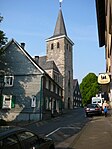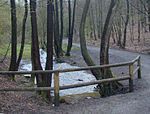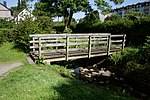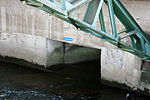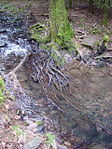Wuppertal-Langerfeld station

Wuppertal-Langerfeld station is a through station in the district of Langerfeld of the city of Wuppertal in the German state of North Rhine-Westphalia. The station was opened in 1948 on a section of the Elberfeld–Dortmund railway from Döppersberg, near the current Wuppertal Hauptbahnhof, to Schwelm that was opened by the Bergisch-Märkische Railway Company on 9 October 1847. It has two platform tracks and it is classified by Deutsche Bahn as a category 6 station.The station is served by Rhine-Ruhr S-Bahn lines S 8 between Mönchengladbach and Hagen and S 9 between Recklinghausen and Hagen twice an hour (30 minutes alternatively).It is also served by bus route 606 operated by Wuppertaler Stadtwerke every 60 minutes.
Excerpt from the Wikipedia article Wuppertal-Langerfeld station (License: CC BY-SA 3.0, Authors, Images).Wuppertal-Langerfeld station
Dorfwiese, Wuppertal Langerfeld
Geographical coordinates (GPS) Address Nearby Places Show on map
Geographical coordinates (GPS)
| Latitude | Longitude |
|---|---|
| N 51.27789 ° | E 7.242677 ° |
Address
Wuppertal Langerfeld
Dorfwiese
42389 Wuppertal, Langerfeld
North Rhine-Westphalia, Germany
Open on Google Maps
